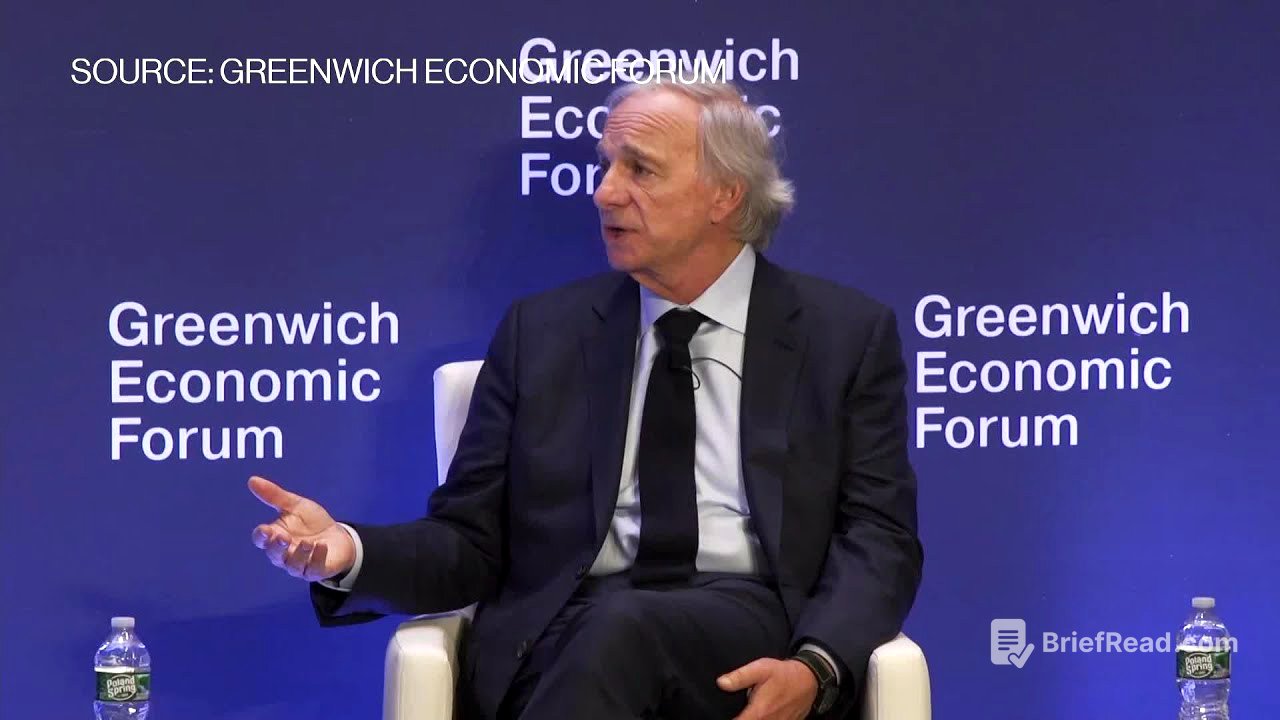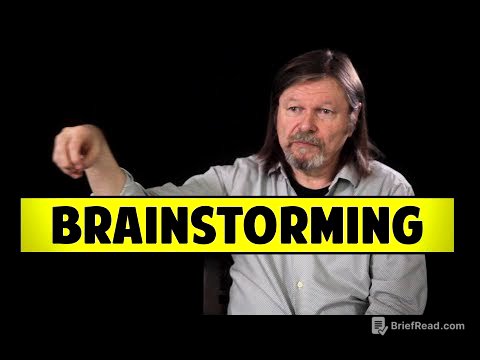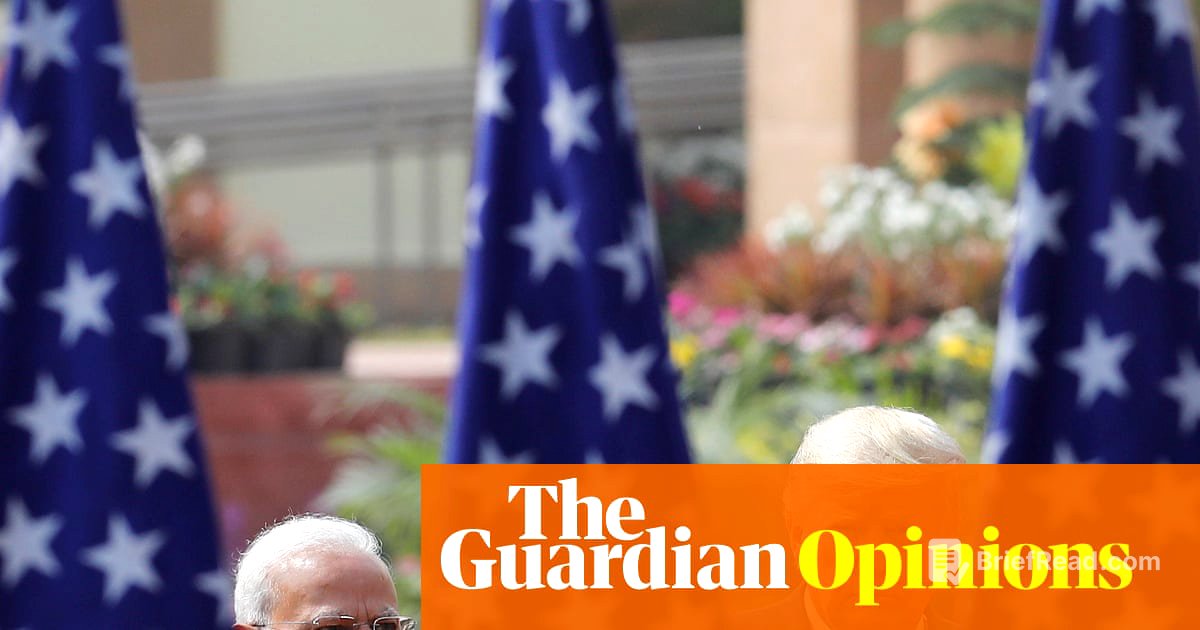TLDR;
Ray Dalio discusses five major forces influencing markets: the debt money economy cycle, wealth and value disparities, international geopolitical cycles, acts of nature, and technological advancements. He highlights current imbalances in trade and capital, the unsustainability of debt levels, and potential shifts in the monetary order, including the rising importance of gold. He also touches on the economic challenges facing China, the frothy conditions in certain market segments, and the role of government intervention in strategic industries. Dalio draws parallels with the 1930s, cautioning about potential conflicts and the breakdown of the multilateral world order.
- Five major forces influence markets, including debt cycles and geopolitical tensions.
- Trade imbalances and high debt levels pose significant economic challenges.
- Gold is gaining importance as a safe haven amid monetary order shifts.
- China faces debt restructuring and economic model issues.
- Government intervention in strategic industries is increasing amid global competition.
Five Forces Affecting Markets [0:00]
Ray Dalio identifies five interrelated forces that affect markets and tend to transpire in cycles. These include the debt money economy cycle, where credit influences buying power; disparities in wealth and values, leading to political polarisation; international geopolitical cycles, marked by rising powers challenging existing ones; acts of nature, such as droughts and pandemics; and the development of new technologies, which historically has raised living standards. He emphasises that these factors are interconnected and understanding them is crucial for grasping the current market dynamics.
Trade Imbalances and Geopolitical Conflict [3:59]
Dalio addresses trade imbalances, particularly the dynamic between Chinese exports to the United States and subsequent Chinese investment in US bonds, which he deems unsustainable due to potential military conflicts. He notes the insecurity on both sides, with China questioning its ability to convert credit into goods and services, and the US facing the loss of manufacturing and wealth in its middle class. Tariffs are presented as a historical method of addressing these imbalances and generating tax revenue, although their impact on alleviating debt concerns is considered small relative to the overall gap.
Debt Sustainability and Monetary Policy [7:15]
The discussion moves to the mechanics of debt, highlighting how debt service payments can squeeze out other spending and create economic problems. Dalio points out the supply-demand issue with deficits requiring debt sales and the role of central banks in monetising government debt. He uses the US as an example, noting that it spends 40% more than it takes in, leading to increasing debt and bond sales. This situation is not unique to the US, as central banks globally face asset-liability problems, leading to a deterioration in the monetary order and countries acquiring gold as a reserve currency.
Gold as a Currency and Asset Allocation [10:09]
Dalio supports the view of gold as a safe haven, drawing on historical events where fiat money was devalued. He notes that both the stock market and gold are hitting record highs, similar to the early 1970s, as investors seek stores of wealth. He advises creating a balanced portfolio with a strategic asset allocation, suggesting that around 15% of a portfolio should be in gold as a diversifier. He expresses a preference away from debt assets due to tight credit spreads and advocates for focusing on real, after-tax returns when making asset allocation decisions.
Monetary Policy and Economic Disparity [17:18]
Dalio discusses the complexities of cutting interest rates, given the split in the economy and capital markets. He notes that while the top 1% has tremendous liquidity, the bottom 60% faces different economic conditions. He questions the effectiveness of monetary policy in addressing this disparity, arguing that artificially lowering interest rates creates imbalances by making it unattractive to hold assets and attractive to borrow. He suggests that discipline is needed but often lacking in monetary policy decisions.
Historical Cycles and Global Imbalances [19:39]
Dalio draws parallels between current global imbalances and historical cycles, particularly the 1930s. He notes that these cycles involve breakdowns of monetary, political, and geopolitical orders. He emphasises the importance of analysing economic indicators to understand the health of the economy and identify potential breakdowns. He suggests that history provides valuable insights into how countries respond when they lack sufficient funds, but acknowledges that each cycle has unique characteristics.
China's Economic Challenges and Opportunities [22:38]
Dalio acknowledges China's remarkable economic progress since 1984 but highlights significant problems, including debt issues, particularly among local governments. He points out that the local governments' economic model, based on land sales and borrowing, is unsustainable. He also discusses the rationing system and overproduction, leading to economic harm. Dalio suggests that China needs a major restructuring, similar to what was done in the 1990s. Despite these challenges, he recognises China's advancements in technology and AI.
Investment Strategies and Market Frothiness [26:46]
Dalio states that he allocates more investment to the United States than to China, considering factors like market capitalisation and ease of capital flow. He notes that while the US market is expensive, China's assets are relatively inexpensive but face capital flow and other issues. He acknowledges the presence of "bubbly" conditions in certain market segments and draws parallels with historical bubbles like the dot-com era. He suggests focusing on the users and platforms that enable the effective use of new technologies rather than shorting the core technologies themselves.
Government Intervention and Geopolitical Conflict [30:10]
Dalio discusses the increasing government intervention in strategic industries, both in China and the United States. He compares the current period to the 1930s, a time of great conflict, and suggests that government guidance is necessary to remain competitive. He acknowledges the risk of wasteful spending but argues that such intervention is needed under the current circumstances. He expresses concern about the potential for conflict and the breakdown of the multilateral world order, emphasising the need to avoid a severe fight and financial crisis.









